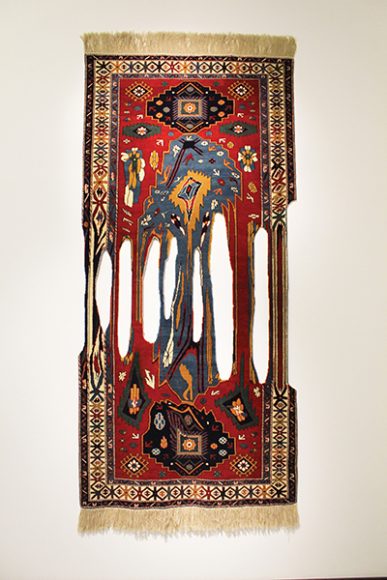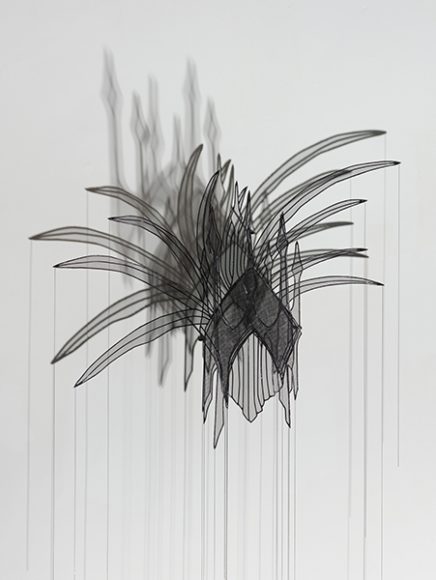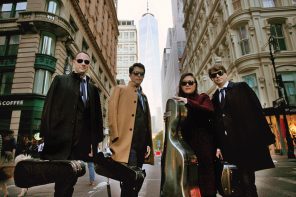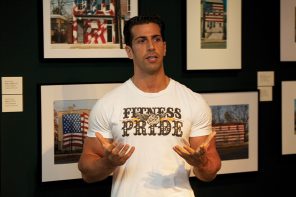Past is indeed prologue for Faig Ahmed, an internationally recognized artist from Baku, Azerbaijan, who marries the traditional carpets of his homeland or Indian embroidery to digital techniques in his work.
It’s part of “Long, Winding Journeys: Contemporary Art and the Islamic Tradition,” at the Katonah Museum of Art through June 17.
The multilayered exhibit deals in part with issues of Islamic identity. But Islam also has a rich legacy of intricate decorative arts and architecture — jewel-colored, calligraphic illuminated manuscripts like “The Shahnameh” (“The Persian Book of Kings”); fluted columns, scalloped arches and filigree squinches as at The Alhambra in Granada, Spain; imposing onion domes and minarets, such as those that grace the Taj Mahal in Agra, India.
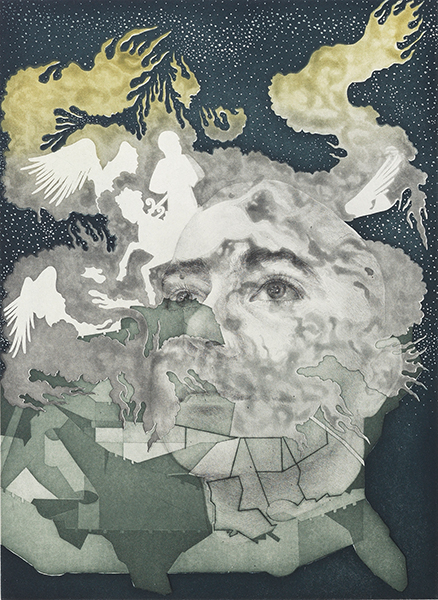
Viewers will encounter elements of Islamic design throughout the Katonah Museum show but perhaps nowhere more apparently than in Ahmed’s oeuvre. His “Impossible Viscosity” (2012), a handmade wool carpet, suggests the vicissitudes of time that textiles — and flesh — are heir to. It is at once deliberately threadbare but also a kind of tracery window, reminiscent of those at The Alhambra, through which the imagination peers.
Ahmed uses the computer to sketch his designs and traditional carpet weaving to create them. He lives and works in Baku, where he was born and where he graduated from the Azerbaijan State Art Academy in 2004. Three years later, Ahmed represented his country in its first appearance at the Venice Biennale. Since then his work has been seen in shows everywhere from the Museum of Fine Arts Boston to the Museum of Old and New Art in Hobart, Tasmania, Australia. It is also part of public collections ranging from the Los Angeles County Museum of Art to the National Gallery of Victoria in Australia.
WAG caught up with him recently via email to discuss the roles that the past, present and future play in his designs:
Carpets and elements of interior design/decorative arts have proved key to your work. Why have they inspired you and what is your approach to using them in your work?
“I don’t think that I’ve chosen the media, the media chose me. The carpet and its potential for transformation have existed for many centuries. This is not an object of one culture, but an object that unites many cultures, some of which do not exist anymore.
“All art is the art of a new language or a new metaphor. As an artist, I was looking for the ideal metaphor that would reflect the states of a spiritual path. Everything I experimented with did not have the same power as a carpet.
“My work is to change myself and to accurately record this state. Carpet is the ideal metaphoric expression….We cover our nude bodies with textiles from birth to death, just like culture covers our instincts.”
On your website, you say, “The past is the most stable conception of our lives.” How so and how does the past inform your work?
“The past formed not only my work; it formed me. Just as the atoms of my body are in plants, animals, humans and the whole cosmos, the carpet flows through cultures, changing. I can feel this power and it directs the changes. The past is what we believe in, since we are entirely there, whereas the future is what we are terribly afraid of. But when we reason deeper we understand that this is an illusion, because the fruit that is now growing on the tree will become an atom of my body in the future.”
Growing up in Azerbaijan, did you want to be an artist? Would you describe the one moment when you knew that was how you wanted to spend your life?
“Azerbaijan today is really an interesting place for the artist, and I’m glad that I grew up in this country. This is the land of fire-worshipers, where Judaism, Christianity and Islam were accepted as well. This is an ancient place of our ancestors’ traditions but still young enough to be integrated into the global culture.
“Ever since I began to think, I wanted to travel and meet the thinkers from other countries and cultures. And nothing has changed since then. I live my life as I always wanted to live. And art is the best activity for a spiritual traveler, but this choice was done unconsciously. I always painted but until a certain age, I did not think that I would be an artist, as I really wanted to become a scientist. I think the choice of becoming an artist was under the influence of the overwhelming desire for freedom.”
What is coming up for you in terms of new work, exhibits, etc.?
“At the moment I am working on the concept of the origin of a pattern as the first expression of a language, where psychology, methodology and even biology played a decisive role. This research will be presented as a project at George Washington University’s Textile Museum (in Washington D.C.) later this October.”

